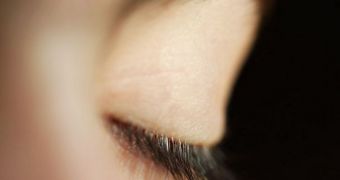Obstructive sleep apnea (OSA) is a very serious medical condition, which manifests itself during sleep. A sufferer's breathing may be temporarily impaired, leading to chocking and diminished blood flow to the brain. If it goes untreated for a year, OSA can have significant implications on the health of the brain. Unfortunately, because of its nature, the condition is not easily diagnosed, and current methods of doing this involve presumed patients sleeping inside scientific laboratories for several nights. Now, a new method could make diagnosing sleep apnea a lot easier, PhysOrg reports.
A group of researchers at The University of Queensland and Brisbane's Princess Alexandra Hospital, in Australia, have recently announced that hours of analyzing snoring patterns have finally paid off. The team, which was led by UQ School of Information Technology and Electrical Engineering expert Dr. Udantha Abeyratne, discovered that snoring was one of the preliminary symptoms associated with sleep apnea. People who do develop the condition experience a drop of the upper air passage during sleep, which impairs air flow, as well as blood oxygenation.
“OSA has snoring as the earliest symptom; almost all patients snore. We have developed several techniques to diagnose OSA using snoring sounds alone. Sounds are acquired through non-contact recording devices, and features are extracted. At present we are capable of screening OSA with greater than 90 percent sensitivity and specificity. These results are unmatched in the world in terms of the non-invasiveness and performance, and unequivocally illustrate the viability of a snore-based, non-contact OSA screening device,” the team leader adds. Sleep apnea is the main sleep disorder in Australia, estimated to affect no less than 800,000 people across the country.
Abeyratne and his team propose that the next generation of OSA treatments be based entirely on breathing-sound analysis. They argue that polysomnography (PSG), the technique currently in use against apnea, is cumbersome to the patient, and that it can provide a number of false readings. “PSG is inconvenient, expensive and is not suitable for mass screening of the population, especially children. The limited facilities around the world have created long waiting lists. There is an enormous clinical need for a simplified diagnostic instrument capable of convenient and reliable screening of OSA in a home setting,” the expert adds.

 14 DAY TRIAL //
14 DAY TRIAL //